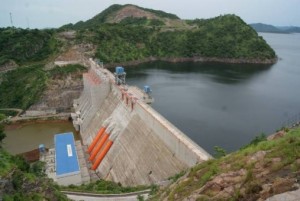BPA requires $4.6m for Bui dam maintenance – Manager

The Bui hydroelectric dam is going through major maintenance works since the 400 megawatts power generating facility at Bui in the Banda District of the Bono Region started power generation in 2014.
According to the Bui Power Authority (BPA), Managers of the facility, the maintenance require $4.6 million to complete the inspection, cleaning and replacement of spare parts, which would take about three months.
Part of the amount would also be used for the training of engineers at the dam site.
Engineers working on the facility shut down and dismantled one of the three units due to “breakages of springs and bushings”, a situation which was affecting smooth running of the turbine.
Mr Justice Kyere, the Dam’s Operation Manager told Journalists during a visit to the power house on Wednesday that the facility is currently generating 200 megawatts of power, instead of 400 megawatts, from its two remaining units.
That notwithstanding, Mr Kyere added that the dam could produce the needed power to continue the national voltage support and stabilization.
Mr Ebo Amoah, the Plant Manager and leader of the team of Engineers, explained it was a requirement for the dam to go through major maintenance every five years, aside minor the maintenance conducted every year.
He expressed concern over delay in the release of funds to continue with the maintenance work, saying the BPA ought to order and import broken down spare parts from China to fix the units.
Mr Amoah added that, all the three units would be shut down, dismantled and go through vigorous inspection and cleaning, and appealed to the government to release funds on time so that the national asset would operate at its fullest capacity.
The Bui hydroelectric project was designed primarily for hydro-power generation.
It however included; the development of an irrigation scheme for agricultural purposes and presented an opportunity for enhanced eco-system and fisheries.
It also comprised a resettlement and community support programme.
The project, which was expected to cost about $622 million was funded with a concessional loan of $263.5 million from China, a buyer’s credit of $298.5 million from the EXIM Bank of China and Ghana government’s contribution of $60 million.
It however experienced a funding shortfall of $168 million, arising primarily from the unanticipated effects of the 2008 global financial upheavals as well as unforeseen essential works.
Source: GNA
